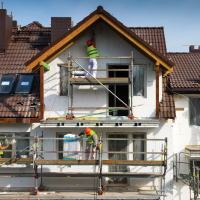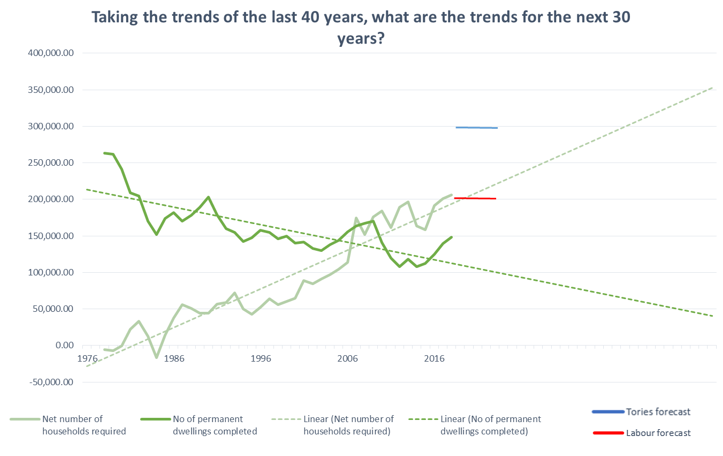
Research by conveyancing search provider Search Acumen found England has experienced a cumulative shortfall of more than 530,000 new homes since 2005. It predicts the shortfall will reach one million in the next five years.
Both major political parties’ 2017 pledges underestimate the long-term future requirement for housing stock, said the conveyancing specialist.
The report came as a speaker for UN said the free market cannot deliver affordable housing.
However, assessment of brownfield land suggests England does have the space to meet the volume of new housing demands.
Search Acumen compared the volume of new homes completed in England each year since 1976 with new dwellings needed to accommodate the growing number of households over the same period. It estimated household growth by assessing annual ONS birth, death and migration data, and used the ONS’ average annual number of people deemed a household to determine how many new homes would meet the extra demand.
In the mid-noughties the creation of new households outstripped supply for the first time in three decades – a trend which has accelerated as the population in England has increased.
This has been exacerbated by the average UK household size reducing by 16%, from 2.78 persons in 1976 to 2.34 in 2016, meaning more but smaller households.
Double output
The Conservative government has pledged to increase new home builds between 2017 and 2022 by 300,000 each year. Search Acumen said only an immediate jump to 300,000 homes per year – double 2016’s completions – would address the current shortfall in the short term.
If trends continue, England will need an additional 510,000 homes to meet demand. This, on top of the current shortfall means England could have more than one million too few homes by 2022.
According to government figures, there are currently more than 31,000 hectares of brownfield land in England suitable to build homes on.
In 2015, housebuilders were able to build 37 domiciles per hectare on brownfield land, suggesting there is enough brownfield land in England to meet cumulative demand for housing for the next five years, said Search Acumen.
If housebuilders continued to build 14 domiciles per hectare on the more than 1.1 million hectares of green belt land in England, 14% of all green belt would have to be turned over to developers to meet cumulative demand into 2047.
Ground to a halt
Andrew Lloyd, managing director of Search Acumen, said: “The housing market in all corners of England has ground to a halt as people struggle to find a home that fits their needs and their budgets.
“Our research suggests that, even with housing supposedly higher up the political agenda, the pledges made at the last election won’t do the job of keeping up with demand in the long-term after years of under-investment into new housing.”
He added: “To make up for years of under supply, we need to embark on the greatest housing boom this country has seen in a century. But it is possible: we have the space, we have the desire and we have tens of thousands of housing professionals in the private and public sector ready to go. We just need our leaders to share our industry’s sense of urgency and begin laying foundations for economic success right away.”













